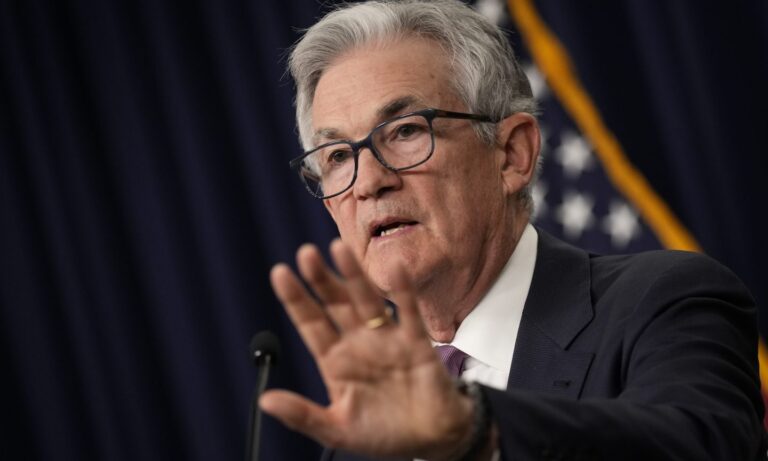After 10 rate increases since March 2022, the Federal Reserve has finally put a halt to its hikes.
While the Fed evaluates the effects of previous basis point increases, the current range of federal funds rates of 5%-5.25% is to remain unchanged.
The central bank is also planning two additional rate increases by the end of this year.
Fed chair Jerome Powell stated during a press conference on Wednesday that the Fed will have ample time to determine whether or not the rate hikes are sufficient to reduce inflation.
Powell stated that “the main thing we are focusing on is the amount of policy tightening necessary to bring inflation back to 2% in time.” The pace and level of increase are two separate factors, given where we’ve come. The rates may need to increase, but in a moderate manner .”
Powell stated that this pause would “allow the economic system a bit more time to adjust as we move forward with our decisions.” For example, he said the central bank was still waiting to see what effect the bank failures may have on the country’s economy.
Powell has not made any decisions about future hikes. However, the Fed will be looking at the following indicators to determine if the economy is improving:
-
-
-
“Goods Pipelines getting healthier and better.”
Powell stated that he would like to have credible proof of the inflation peaking and starting to fall.
The rate of inflation continues to fall
This Fed pause comes in the wake of a debt ceiling agreement that avoided a catastrophe for the economy, as well as a new report on the consumer price index which shows inflation continuing to decline.
According to the Bureau of Labor Statistics, the CPI for May showed a 4% overall increase in the last 12 months. This is the lowest 12-month growth since March 2021. In June 2022 the increase over the previous year was 8.6%. The core CPI, excluding volatile food and energy costs, rose by 5.3% in the last year. Core CPI rose 6% in June 2022 over the previous 12 months.
The CPI can be used as a proxy to measure inflation. However, Fed uses the Bureau of Economic Analysis’ core Personal Consumption Expenditures Price Index (PCE). According to the most recent report released on May 26th, core PCE between April 2022 and April 2023 increased by 4.7% – roughly equal to the 12-month data from the previous four months.
The current rate of inflation is not yet meeting the Fed target rate for inflation, which still remains at 2%. Powell stated that “if you take a look at the core PCE overall inflation, over the past six months you don’t see much progress.” We want it to move down substantially .”
According to economic theory, the relationship between inflation and employment is usually inverse. In this instance, however, the inflation rate is falling without a significant loss of jobs. Powell said at the press conference that the labor market is the engine driving the economy. The unemployment rate, which remains low, stands at just 3.7%.
Powell stated that the labor market has “surprised many analysts, if it is not all of them, over the past couple years, with its remarkable resilience.” It’s amazing .”
The next step is
The Fed’s dot plot, a chart which includes the rate projections of each member of its Federal Open Market Committee, indicates that there will be two additional increases in the interest rates by 2023.
CME FedWatch, a tool of the futures markets, favors the likelihood that the Fed will raise rates by a quarter point at one time or another during its next three meetings scheduled for July September and November. It’s all speculation, but anything is possible.
Next Fed meeting is July 25 and 26.
(Photo at top by Drew Angerer/Getty Images via Getty Images).
